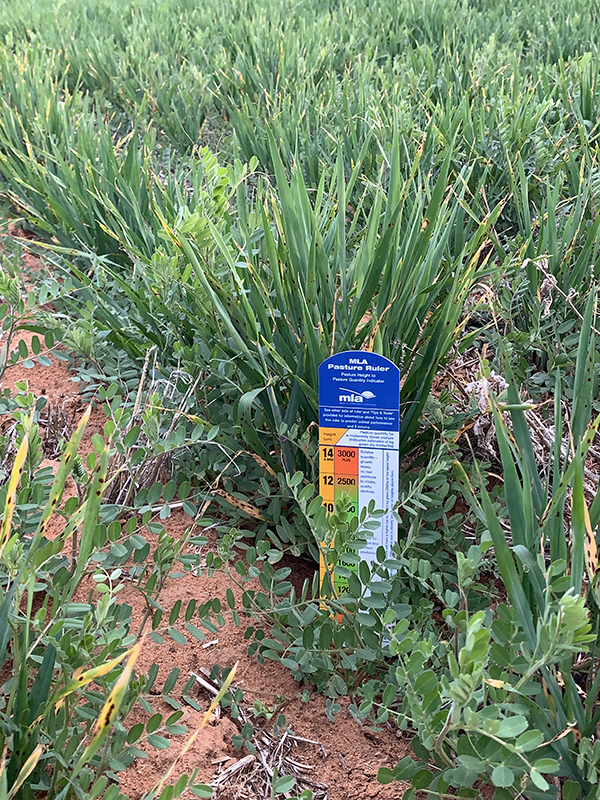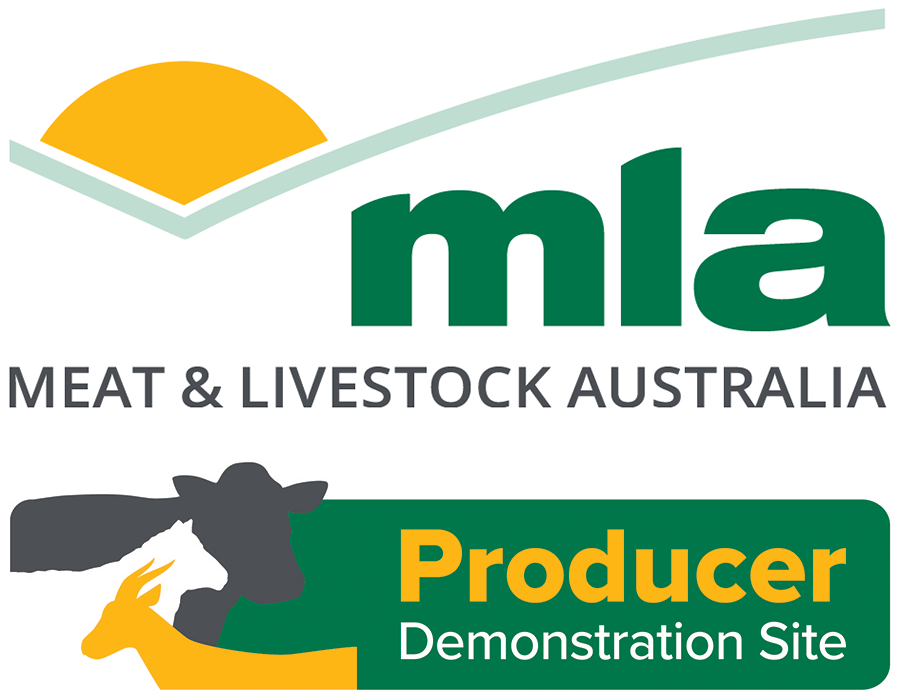More Northern Mallee lambs on the ground
Dryland producers in the Northern Mallee are predominantly cropping focused. However, sheep have become a more significant part of the farming landscape in recent years. While the primary focus is on cropping, an appetite to improve current sheep reproductive performance is being driven by strong lamb prices and increasing numbers of sheep. A significant need to improve knowledge and skills to address and look for ways to increase the reproduction rates of their sheep was identified by a group of Mallee producers and are being put into practice in an MLA-funded producer demonstration site (PDS) with support from Agriculture Victoria.
The purpose of this 3-year producer demonstration site is to increase the number of lambs weaned by 5–10% using a combination of best practice reproduction techniques. These include scanning for single and twin-bearing ewes, better managing nutrition based on pregnancy status, optimising joining length, decreasing mob size – particularly for twin-bearing ewes – and other management practices that help to improve reproductive efficiency.
In the first year, host farms focused on the ram effect, separating single and twin-bearing ewes at pregnancy scanning and reducing mob size of twin-bearing ewes at lambing.
The second year involved similar demonstrations, plus one farm changed the time of lambing from April to late July/August, implementing many new practices at the same time.
Reproduction results
The reproduction results from all host farms improved between 2023 and 2024 lambings (see Table 1). The scanning percent increased across all farms, with 2 farms recording increases of 24 and 22 percentage points. More adult ewes are carrying twins – up to 20 percentage points more in some instances. The marking rate increased by more than 10 percentage points on some farms and the number of dry ewes decreased by up to 5 percentage points across the farms from 2023 to 2024. These improvements were also observed from their pre-PDS reproduction levels.
Table 1: Scanning, marking and dry ewe percent and percentage of ewes carrying twins for 4 farms in 2023 vs 2024
| Host: year | Site 1: 2023 | Site 1: 2024 | Site 2: 2023 | Site 2: 2024 | Site 3: 2023 | Site 3: 2024 |
|---|---|---|---|---|---|---|
| Scanning % | 140 | 164 | 124 | 146 | 134 | 143 |
| Mark % | 111 | 126 | 97 | 109 | 97 | – |
| Dry ewes % | 7 | 3 | 13 | 11 | 15 | 10 |
| Ewes carrying twins % | 47 | 67 | 37 | 57 | 48 | 53 |
As the skills, knowledge and confidence grew over the course of the demonstration, more producers have been willing to trial and change their existing operations to optimise and increase sheep reproduction outcomes.
Benefits of later lambing
One of the biggest changes has seen one family business move its time of lambing from May to late July/August in 2024. The Gowers family decided to move the time of lambing to coincide with more available green feed on the ground when lambing ewes needed it the most. Traditionally, the Gowers lambed in May, requiring ewes to be fed grain and hay over lambing, as there had been little to no available paddock feed. This resulted in nutritional and mismothering challenges that impacted weaning rates.
As a consequence of moving lambing time to late July/August, the whole annual sheep husbandry calendar required changing. Plans were drawn up, pros and cons discussed and strategies put in place. Shearing was moved from October to April. Rams were put out with ewes in February instead of November and strategies were put in place to manage feed options for the later-born lambs at the end of the year.
With a change to joining time, ewes were managed as dry sheep throughout the summer period. The abundant crop stubbles provided a suitable feedbase with enough energy and protein to maintain their weight and condition prior to and during joining, Ewes were joined for 35 days.
During the autumn break, the lambing paddocks were sown down with fodder crops, while the ewes were placed into containment pens and fed according to their pregnancy status after scanning. The seasonal conditions meant ewes stayed in containment until 2 weeks prior to lambing, after which they were placed on fodder crops of barley, peas and vetch mix for lambing.
Ewes were assigned lambing paddocks according to pregnancy status, with single and twin-bearing ewes separated. By this time, the feedbase was more than 1,200Kg/DM per hectare and actively growing (Figure 2), adequate to support the nutritional requirements of the lambing ewes.

These changes to lambing saw the ewe conception increase from 140% (2023) to 164% (2024) in the adult ewes. The number of lambs marked increased from 111% (2023) to 126% (2024) and the number of dry ewes decreased from 7% to 3% over that time. At marking, lambs weighed on average 23kg across all single and twin-bearing mobs and had grown on average at 400g/hd/day.
In addition to supporting the ewes and lambs, some good excess areas of the fodder pasture were fenced off and 200 big square bales were cut for hay, removing approximately 150 tonnes of dry matter. This bonus was achieved through setting up paddocks early for a later lambing, allowing time for fodder to establish and grow.
A lupin stubble was identified for weaned lambs. However, late spring rain caused a lupin germination which threatened lupinosis and led to a shorter grazing period than expected and more lambs being sold as stores. Around a quarter of the lambs were sold as suckers into the prime lamb market before weaning, while the remaining lambs were sold as stores or prime lambs depending on their weight at 6–7 months of age. Overall, around 60% of the lambs were sold into the prime lamb market.
After weaning, the ewes were placed on available paddock feed and moved as needed once stubbles became available after harvest. Ewe requirements have been met more easily, having weaned.
The pros and cons of changing the time of lambing from April (in 2023) to late July/August in 2024 were discussed with the Gowers at the end of the first year and the family are keen to continue with later lambing, as the system benefits outweigh the costs.
Strategies are being put in place in 2025 to circumvent challenges experienced in 2024. This includes purchasing replacement rams with low-birthweight breeding values to address dystocia experienced from joining merino ewes (including maidens) to Poll Dorset or White Suffolk rams with no breeding values.
Insights from the hosts
Bec Gowers is pleased with how the demonstration is progressing. ‘This is our third year of lambing after bringing sheep back onto the property. After the first 2 years of lamb in May I thought we could do better.
‘We had the same problem each year with no feed at lambing, so we were flat out having to feed the ewes and lambs in the paddocks, interrupting them and losing lambs. At marking time, we didn’t have the percentages that I thought we could get.
‘Since participating in the demo we have made some major changes and moved lambing time to late July/August. Our scanning results have consequently increased from 2023 to 2024 and we didn’t need to feed the ewes during lambing as we had enough green paddock feed.

‘There is no recipe and the 2025 season will undoubtedly present its own unique challenges. However, we have some flexibility to adapt and modify our system. Later lambing has been a major change that has improved our scanning rates and allowed us to better align our feed demand with availability. It has also removed the stress of feeding ewes during lambing.’
As we head into the last year of the PDS, we aim to give the producers the skills, knowledge and confidence to continue with best practice reproduction management practices and trial new ways to manage their sheep reproduction in an optimal way.
For more information, email on-farm-demos@agriculture.vic.gov.au